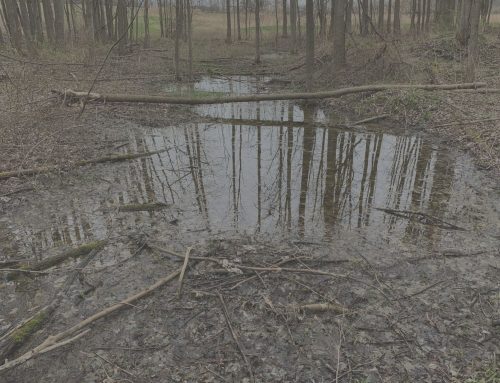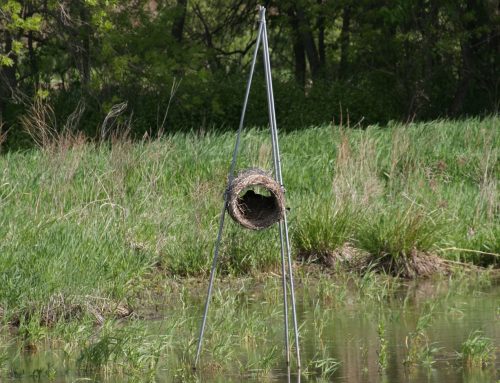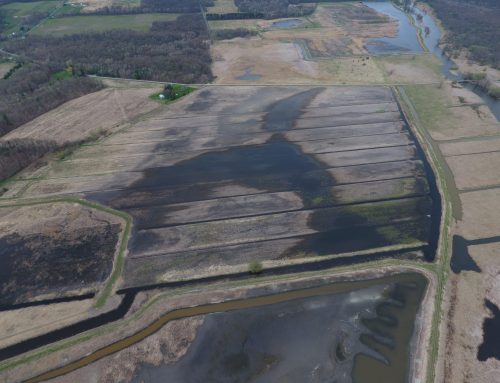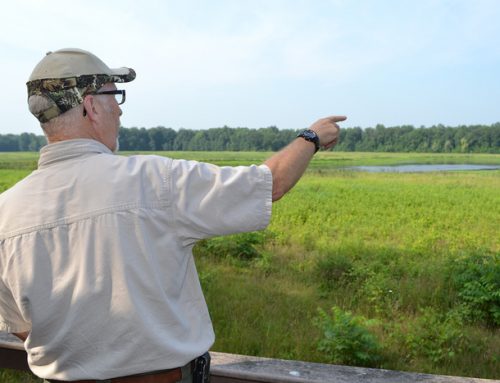A wetland has three key identifying characteristics: water (hydrology), soil and vegetation. Wetlands are flooded or have water near or at the surface for at least part of the year. Over the years, this wet condition produces what is known as ‘hydric soil,’ which is often dark colored. These water and soil conditions give certain plants a competitive advantage over the typical plants you see growing in upland areas. Most people are familiar with cattails, bulrushes and other emergent plants that are often found along wetland edges, but there are many other interesting species that like to grow where their feet (roots) are wet. I’ll describe some of them and talk about their value in a future article.
So how does a natural resource professional go about restoring an area that was once a wetland, but has been drained or otherwise altered? Sometime it’s as simple as plugging a ditch or series of ditches that drained or ‘de-watered’ the site. If there has been grading or excavation in the past, restoration may require the construction of a low berm or dike to bring the water back up to somewhere near the original level. A simple water control structure may be added to provide a bit of control over water levels. Once established, periodically draining the area (known as a ‘drawdown’) and then reflooding mimics natural wet and dry periods. This can rejuvenate the soil and stimulate growth of wetland plants.
Many believe that planting seeds, bulbs or tubers is necessary during the restoration process. This may be true if the area has been significantly altered, such as by extensive soil disruption or removal. However, many wetland plant seeds and parts remain viable in the soil for years. Once the hydrology is restored, they respond and grow vigorously, quickly ‘re-claiming’ what was formerly ‘theirs.’
Habitat managers must be careful during the restoration process. Whenever an area is altered, even in a good way to re-create a wetland in a previously disturbed landscape, there are problems that can arise. First and foremost, invasive plant species can become established on the site. The ‘big three’ invasive species in wetlands are purple loosestrife (Lythrum salicaria), common reed aka phragmites (Phragmites australis) and reed canary grass (Phalaris arundinacea). All of these can grow rapidly and quickly dominate an area so that native vegetation is crowded out. To make matters worse, the invasive plants are often of little value to the wild animals and birds that need wetlands to survive.
The area around a restored wetland is also an important consideration. Wetland habitat restoration does not stop at the edge of the marsh. To help protect the wetland from erosion and runoff, a buffer area consisting of a mix of native grasses and forbs is generally created. This can be a narrow strip, but more often hundreds of feet in width if space allows. Many waterfowl and other birds nest in these grassy areas, aka DNC or dense nesting cover. The wetland and grassland function together, providing ideal habitat for a wide range of birds and animals, including many endangered species.
This is a simple explanation for a sometimes complex and lengthy process. Successful wetland restoration requires biological and engineering skills, as well as a dash of creativity. The end result, with a bit of luck, is a healthy addition to the landscape that can provide many benefits to wildlife for years to come.







Leave A Comment